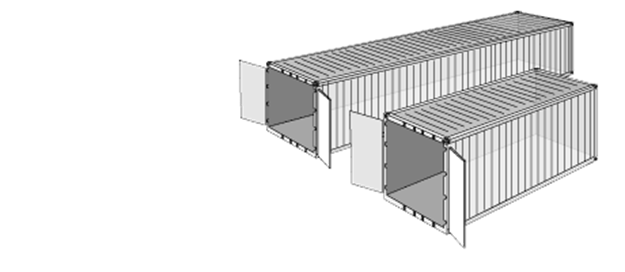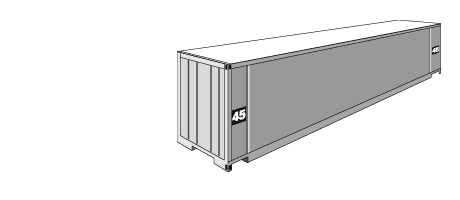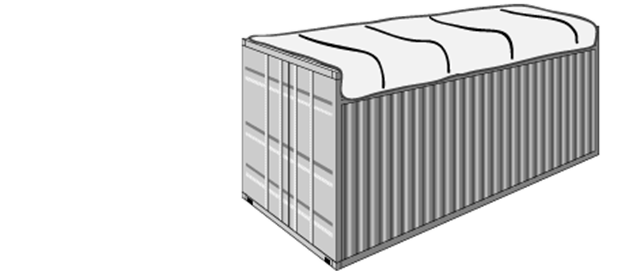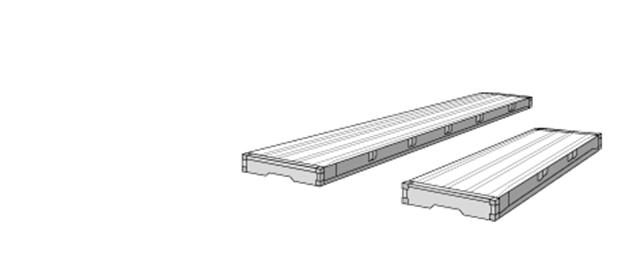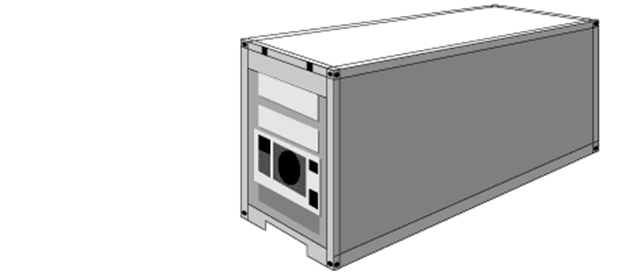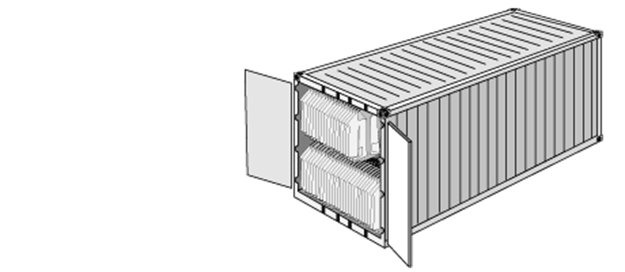
Whether you have full container load (FCL), less than container load (LCL) or non-containerised load, we can organise the transport of your goods by sea freight efficient shipping services.
As a freight agent, we’d like to share our knowledge and experiences in this article, and hope all the information below can help you improve your supply chain management. We are constantly updating this guide, make sure to come back and check the information you need from time to time. Besides, we can discuss more about your specific logistics requirement by submitting our quote form
FCL/LCL
FCL, full container load, which means your goods loading into a full container. You buy large quantity, and the freight cost per unit will be less. It’s from CY (container yard) to CY.
LCL, less than container load, which means your goods and other importers’ goods consolidating together from the same loading port to the same destination port. You buy the just right quantity suitable for your specific target market.
Packaging
Your cargo must be sufficiently protected, from the factory to a loading port warehouse, and stacked in a container for up to a month. Then to a discharge port warehouse, and finally on a truck to you.
A lot can happen in this time, and you need to be sure that your export packaging is up for the task.
- Inner cartons: 5 layers
- Outer cartons: 5 layers
- Plastic wrapping: Yes (on Outer carton)
- Pallets: Yes (IPPC ISPM 15 Standard)
- Freight remark: Yes (Printed on outer carton)
Here’s the common pallet size.
- 1200*1000mm or 1200*800mm, for Europe
- 1140*1140mm, for Australia
- 40*48inches (1016*1219mm), for the U.S.
You’d better provide the shipper with explicit and clear export packaging specifications. Do not leave anything to their interpretation, and provide graphical examples whenever possible.
LCL vs. Courier
A question for you. If your shipment is less than 1cbm, for example, 0.4cbm with 50kg, still LCL?
Please note the minimum billable weight/volume for LCL is 1 cbm or 1 ton.
You may think delivery via sea is always cheap. But in fact, courier service is more competitive for this kind of small package. Generally speaking, it’s better to choose express courier than LCL for the billable weight of a shipment under 100kg, sometimes even 200kg for certain destination countries.
Trade Terms – EXW/FOB/CIF/DAP
These are four common terms of trade (aka incoterms) when buying from the Netherlands. A product price is always quoted according to an Incoterm.
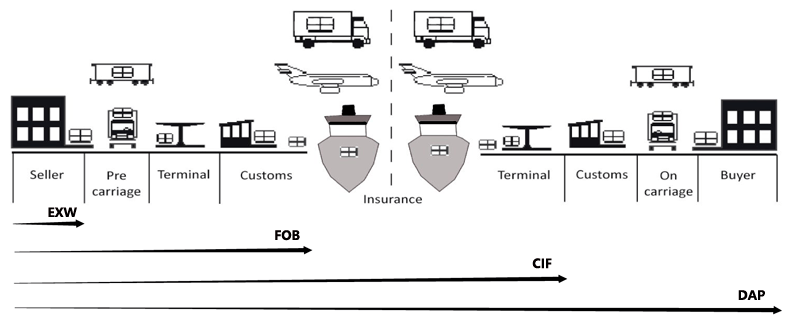
- no further place but the factory/manufacturer, which is EXW
- a nearby port in the Netherlands, which is FOB
- a nearby port in your country, which is CIF (including maritime insurance)
- all the way to your facility, which is DAP/DDU (not including tariff and taxes)
In brief, it can be divided into 2 categories.
- EXW and FOB means you – the buyer can use your own freight agent and pay for their services directly.
- Other term means the seller use their freight agent and you still pay for that.
Commonly, you can find the term states clearly in the Proforma Invoice or Quote Sheet provided by the seller. If not, advise the seller to add into the papers to avoid any further confusion even dispute.
When you compare prices from several suppliers, make sure they are based on the same term. For example, A-seller quoted EXW $5/unit while B-seller quoted FOB $5.5/unit, it doesn’t mean the price from B-seller is not more competitive than A-seller.
* Most suppliers will quote EXW or FOB price at the beginning, and are flexible in providing different price based on different term upon your request.
zcargo’s Suggestion
But since you have us, we suggest you can select EXW or FOB, and let us assist you manage the transportation to your port or to your door.
Please note: Even to-door service, unlike parcel delivery companies, common FTL/LTL carriers typically only provide dock-to-dock service or curbside delivery where the driver does not touch the freight. This is known as “Dock to Dock” or “Shipper Loads / Receiver Unloads”. So commercial dock or curbside delivery only. Residential or inside delivery means extra fees.
EXW or FOB?
Quite a few buyers seek advice from us about choosing EXW for the max control of the goods.
Generally yes, but it depends.
The difference between EXW/FOB is if the seller handle the internal trucking to the port, prepare customs documents, and pay local fees accordingly.
Pickup from anywhere in America will be ok for us. But exporting customs clearance may be in trouble for some certain products, such as wooden furniture.
Since Commodity Inspection is mandatory for a few goods, and it has to be done by the producer/manufacturer.
The best practice:
- If the shipment is just samples or small (under 150kgs and 1cbm), select EXW.
- If the shipment is to Amazon FBA warehouse, select EXW.
- Other cases, request the seller quote based on FOB AND list the FOB fees separately, then we can tell if it’s too much or reasonable.
Insurance?
Marine insurance is very cheap, rough US$50-US$100 based on the shipment invoice value.
There’s no reason not to have your consignment insured with a little additional money. It will cover the transportation damage, but please note it doesn’t cover any quantity or quality issue.
,
What is the cost of ocean and sea freight?
There are numerous tariffs and costs to consider when having goods shipped or importing goods from overseas. It depends on the agreement with your supplier – will they just be delivering to their port, your terminal, your warehouse? Be sure to know which incoterm relates to your shipping contract, so that the responsibility between yourself and the supplier is clear. Fees include, but aren’t limited to:
- LCL or FCL fees
- Transportation to Port of Loading
- Export customs declaration
- Loading port fees
- Ocean freight charge
- Insurance
- Destination port fees
- Import customs clearance
- Customs duty/tax
- Transportation from the Port of Destination
- Destination country customs related fee (i.e. Duty/Tax)
- Destination port/terminal handling fee (i.e. THC)
- Destination agent service fee (i.e. D/O)
Bill of Lading and Shipping
Shipping goods also requires a Bill of Lading (BL), for sea freight, these are called Seaway or Ocean Bills of Lading. A Bill of Lading lists the cargo that will be loaded or carried on a ship, given to the consignee of the goods. A Bill of Lading can act as a receipt that goods are loaded, a form of contract to demonstrate that goods are being shipped, and a document to the title of goods.

